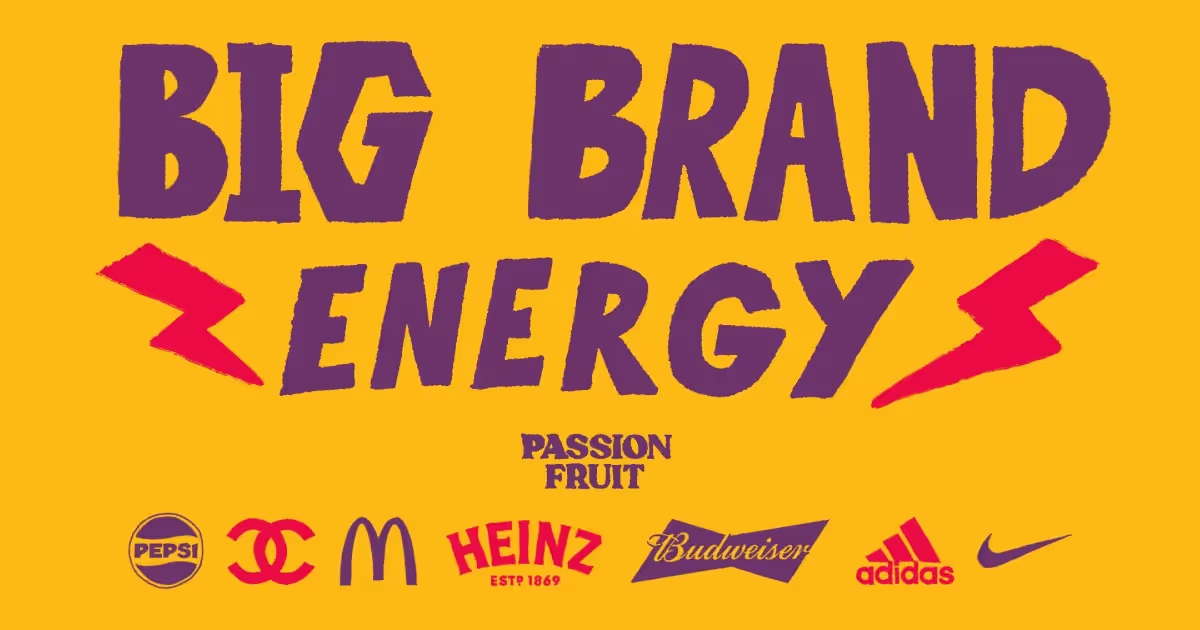For decades, ‘sustainability’ has been a buzzword in the fashion industry.
Now, as the UNDP’s “Peoples’ Climate Vote” shows that almost ⅔ of people consider climate change to be a global emergency, many retailers are aware that greenwashing will not wash with consumers for much longer.
In the same way that car manufacturers are transitioning en masse to electric vehicle production, clothing manufacturers are diversifying into resale and rental instead of encouraging “new” consumption.
The seeds of change are now visible, with Levi’s launching their own second-hand retail platform, Ganni launching a rental platform for its biggest fans and Selfridges partnering with HURR to build a rental concession in-store. Every big beast is playing catch up, however, as a wave of secondhand-focussed startups grow resale and rental brands with existing traction.
The OG success story in this space was Rent the Runway - whose founders Jennifer Hyman and Jennifer Fleiss pioneered the concept of the “closet in the cloud” back in 2009, to create a listed company now worth $1bn+. America is also home to Poshmark, The RealReal and ThredUp, all unicorn or IPO’d businesses in their own right, as well as Series A, YCombinator-backed Curtsy. But given the $2tn market cap of the fashion industry, and the $30-40bn market of second-hand apparel within that and the impressive growth rate between now and 2024, there is room for many more winners.

Zeroing in on the British clothing resale and rental brands, we find a market with one leader, Depop, and a chasing pack. Much like the UK grocery delivery scene, which we evaluated last week, a distinguishing feature of this market is its limited scope for brands to compete on product and technology.
Of course, there is a difference between selling or renting, and peer-to-peer or owned stock, but beyond those variables, it comes down to which platform can create brand and community by marketing itself most effectively to potential customers. This challenge is made more acute as the next generation of shoppers pins who they are to what they wear. As Kati Chitrakorn, retail and marketing editor at Vogue Business, describes:
“[for Gen Z] fashion is less about fitting in and more about making choices that reflect their own identity.”
This is the not-so-secret secret behind Depop’s success. In the investor call to announce the deal, it was no surprise to see Josh Silverman, CEO of Etsy, who recently acquired Depop for $1.6bn, wax lyrical over Depop having “the most engaged community of any resale platform”.
Under the watchful eye of Peter Semple, whose stripes were earned at Google’s Creative Lab and Anomaly, Depop empathises with its customer base like few brands inside, or indeed outside, the category. Its recent report into Gen Z’s buying habits evidenced the nuanced understanding of its users that underpins every aspect of its marketing. The nuts and bolts of Depop’s brand are flawless: a brand strategy and identity that is intentionally and unapologetically bold, with a devilish red-on-black colour palette working against GT America - a typeface as versatile and multi-faceted as the identity of many of its customers. The way it positions its product - from a copy perspective - is nailed on for its under 26 user base; as it put on Instagram recently, “Channeling this energy always xo”.

When it comes to the rollout of its brand, content marketing is king and queen and everything in between for Depop. Its executives have gone on record about the importance of staffing each social platform with specialists, and reaching quality through quantity. That formula has been a recipe for success. Just take its YouTube series with drag star Charity Kase, consistently attracting hundreds of thousands if not millions of views. It’s other main growth engine, partnerships, is led by Steve Dool, who engineers carefully selected relationships with companies that confer high-end status on Depop, such as Vans and Adidas Originals, but also ones that bring street-level credibility with Anna Sui and Rodarte.

Compounding together, the flywheel of these marketing efforts have created the kind of social belief and tribal network effects that are the lifeblood of a managed marketplace business like Depop. Even anecdotally, as I type this, two twenty-somethings are sitting next to me at a café on the Regent’s Canal in London, talking about what they’ve seen and sold on Depop this week. That might seem coincidental, but this is the logical conclusion of a brand that has strategically and relentlessly pursued relevance among specific age-groups of people with a clear psychographic commonality.

Depop’s successful entry into popular culture is best highlighted by the Depop Drama account. Despite highlighting some of the difficulties of using the platform, it increases mental availability of the platform in buying situations, and that kind of salience is golddust for a brand looking to consolidate its position at the top.
Of course, you can feel the cash-advantage they have over the rest of the category, but it has been put to near-perfect use. There’s a reason why Etsy just paid $1.6bn for it, after all.
The good news for British resale and rental startups that look at Depop with awe and wonder is that the most valuable weapon in Depop’s arsenal - its community-centric brand - isn’t an expensive endeavour to begin or grow, only to sustain at scale. So how are the next generation of contenders doing when it comes to marketing, building community and brand?
BY ROTATION
Founder: Eshita Kabra Davies
Funding: Undisclosed (Seed)
For a company yet to celebrate its second birthday, and a tiny marketing team seemingly led just by Catherine Fulwood and Maruta Velsa, By Rotation’s efforts punch well above their weight.
In terms of distinctive assets, the unique green-pink look is tight, but it’s the brand story that does the heavy lifting: focussed squarely on sustainability with enough depth to attract celebrities to spontaneously reach out and ask to join forces in transforming the world of fashion.
As for their content marketing, it might be time to rotate away from Twitter and Facebook, which are likely not worth the time and effort at the top of their funnel, and double down on Pinterest and Instagram - inherently more shareable - where their followers are growing exponentially to now 7k month on month off the back of their quick-minded “A Glass of Wine With” Insta Live series.
Their YouTube channel seems to have gotten off to a false start, but given the success of others in the category, it could be worth revisiting. With its focus on peer-to-peer and rental, there is scope for some lovely storytelling around the “Rotators” in their community, and the occasions the items are used for. Just anecdotally, I know of two women that have rented dresses through ByRotation to announce a pregnancy…
Another avenue worth exploring is the wider category of slow living. I love the way their Founder describes it as “a multidisciplinary art that will naturally take a lifetime to master.” How does ByRotation fit in alongside the other players in the slow-living space? Thinking through the web of brands that its customers also use (Co-Star? Headspace?) will lead to some exciting places, and also create more noise that will help with its SEO - a space where, a quick Google search tells me, they’re stuck below their rivals.
In any case, if they can hit their current heights with a fledgling marketing operation, the future looks promising indeed, especially as they take investment in exchange for more resources.
Place on the podium: 1st
ROTARO
Founders: Brooke Andrews, Georgie Hyatt and Charlie Knowles
Funding: Undisclosed
An even smaller team making a similarly disproportionate impact on their category: founder-led marketing efforts with the help of a social media coordinator in Yasmine Armegnol have brought about nearly 20k followers on IG - a robust base from which to grow. It’s great that they’ve focussed on one channel to begin with and it looks like their TikTok is their next target; a well-reasoned play based on their customer personas, no doubt.
Where they’ve excelled is in the partnership space, with brands like PANTONE already on board and exciting partnerships on the horizon, including the launch of a secretive “secret space” to celebrate stories from their community. CEO Georgie Hyatt has a background in the forecasting and consultancy industry at WGSN, and evidently understands how this whole universe joins together: “The future of fashion is rental, resale and responsible brands.”
If there is one urgent area for improvement, it’s at a foundational level. Branding wise, Rotaro needs to move away from the black and white colour scheme and develop a brand that will be uniquely theirs (take a look out our post on branding an early stage startup here). The benefits of that move will be widespread, not least in giving their social channels a more cohesive look and feel across imagery and typography.
If they can address the fundamentals, the smart money says that Rotaro will be a long-term player in this space.
Place on the podium: 2nd
ONLOAN
Founder: Tamsin Chislett and Natalie-Anne Hasseck
Funding: Privately Owned
Though also suffering from a standardised black and white identity, Onloan is home to is a strongly-worded brand manifesto - whose energy and ethos reverberates throughout their comms and marketing.
Its unique approach - with its “family” of designers - is a velvet rope approach that gives Onloan the best chance of emulating the success of Curtsy’s “girl gang”. This angle would play well into a YouTube or even TikTok series where those designers are put front and centre; helping their customers understand why those designers have been picked while uncovering the stories behind their designs and their sales.
A lot of that video content could be transcribed and repurposed into their impressive Moodzine. While still in its infancy, it feels like a digitised version of a glossy fashion mag article. Why not go all in and commit to being the first fashion rental brand with its own monthly magazine?
Their existing approach is translating into bottom line results, with revenue that has 3x-ed since February 2021, and that means money to invest back into the brand. It’s a strong start and a bright future for Onloan.
Place on the podium: Joint 3rd
HURR
Founder: Victoria Prew
Funding: Privately Owned
Another sufferer of the black and white brand - if you want to understand why we keep going on about them, learn more about distinctiveness here. That said, in every other department, HURR is going from strength to strength. They’ve done a faultless job across Pinterest and Instagram, with their first strides on YouTube looking positive and their blog “The Download” original, useful and well-curated.
The aforementioned partnership with Selfridges is a category-leading collaboration which reminds us of the deal Pasta Evangelists struck with Harrods… It’s worth reading about the impact that deal made in full, but in short it provided long term fame and short term sales - the double act that every marketer strives for.
We would love to see them make more of the sustainability angle that they’ve got going on. Green dry cleaning and reusable packaging are neat extensions of the brand but those features don’t feature in their all-too-generic strapline of “The Platform For Fashion Rental”. Nothing a little bit of product marketing can’t fix…
Overall it’s another well considered brand with clear room for improvement, but every chance of success.







